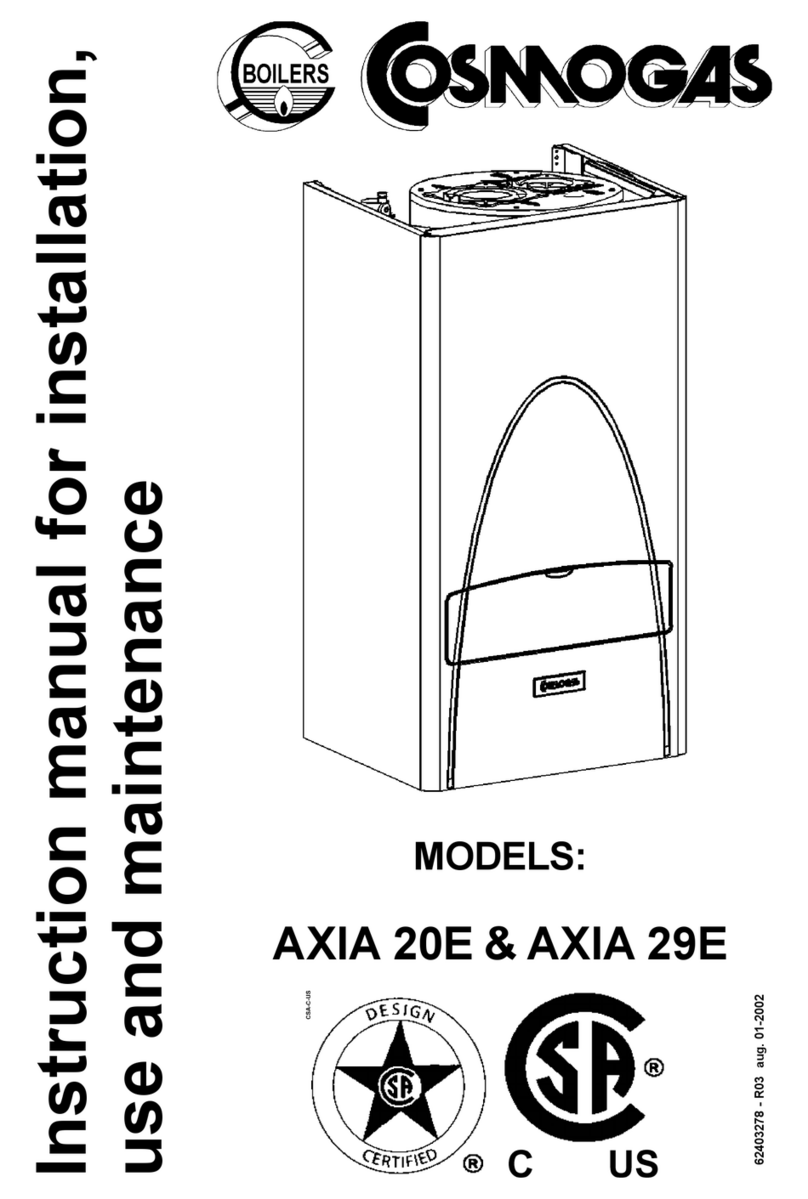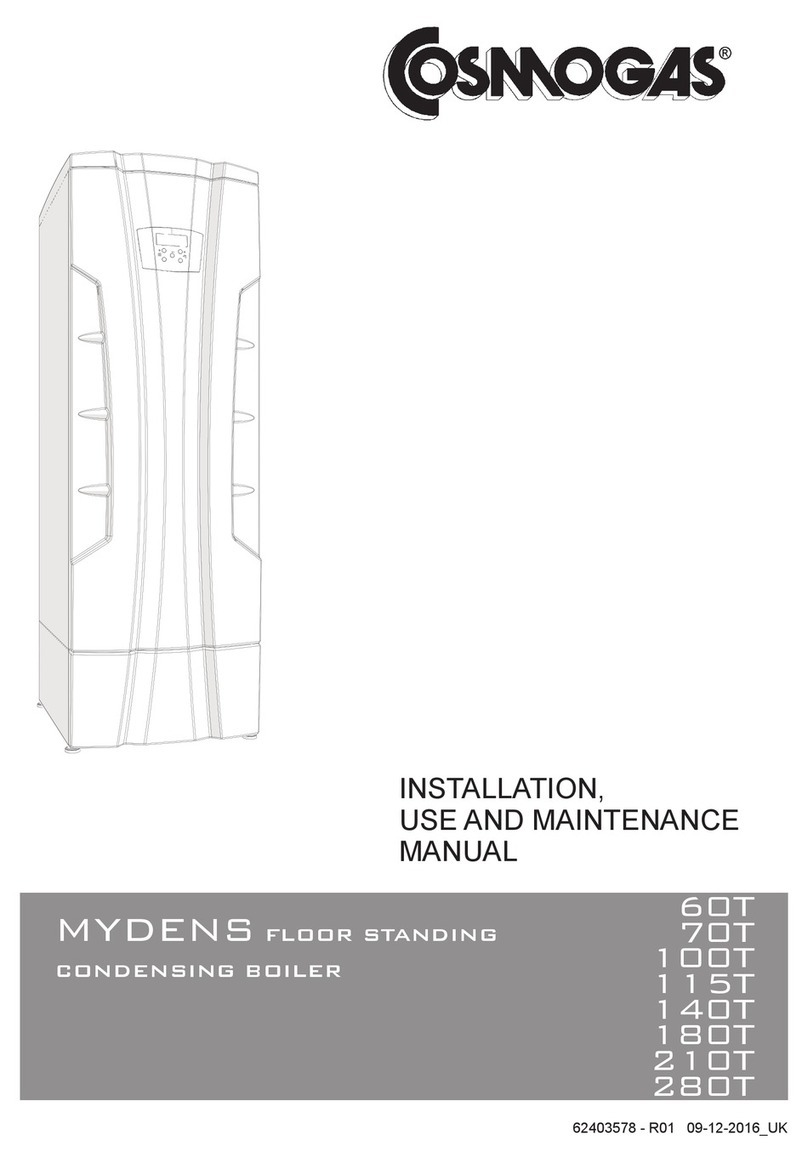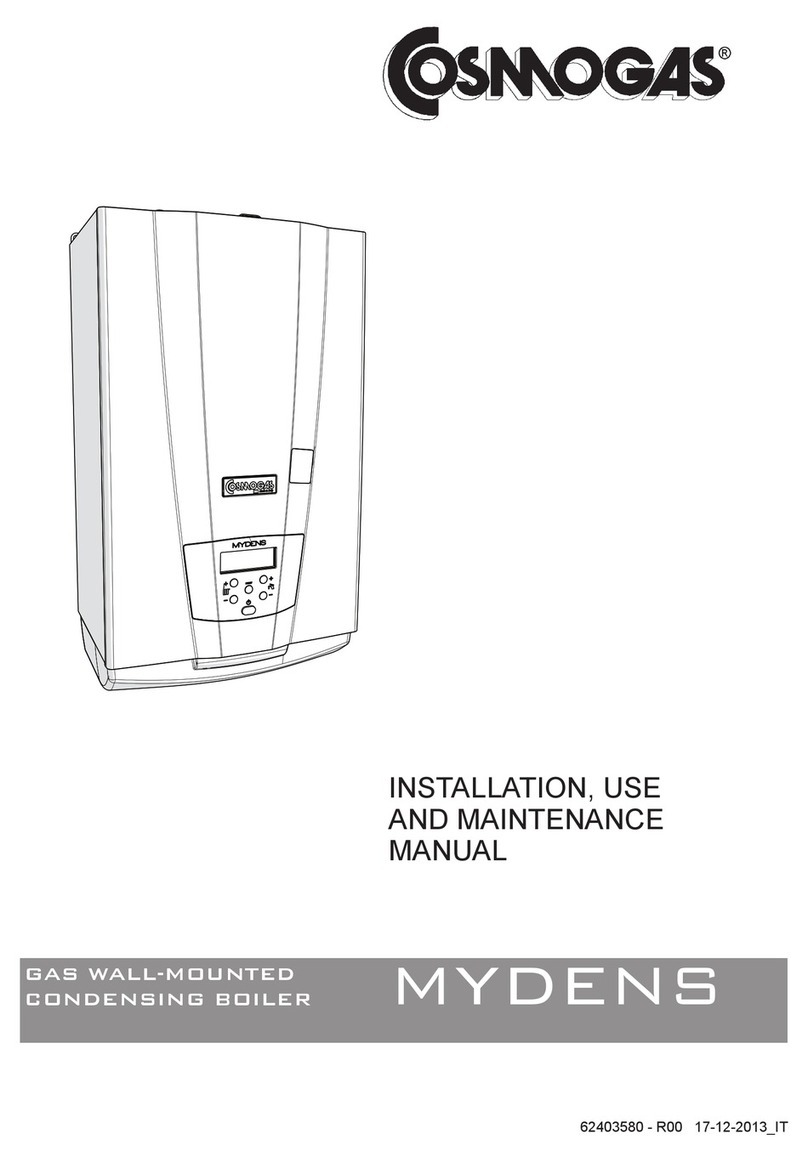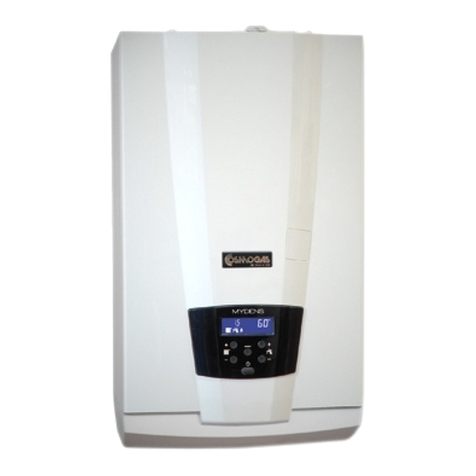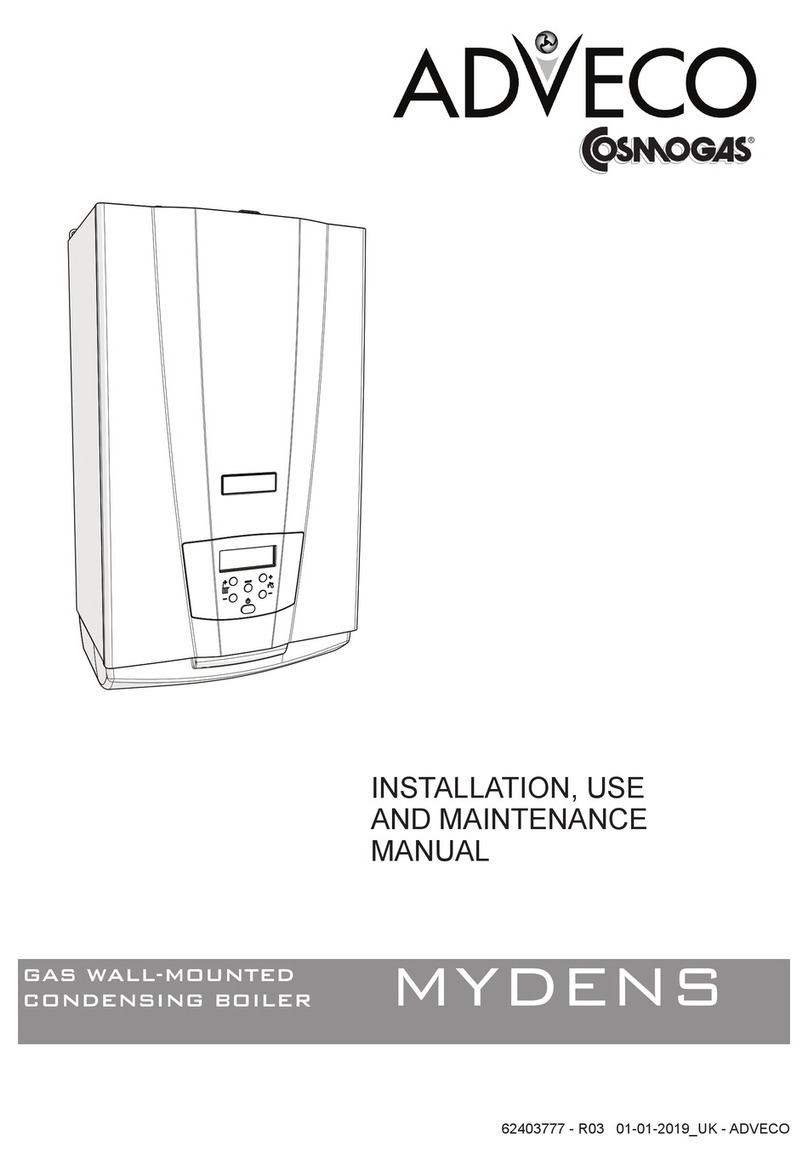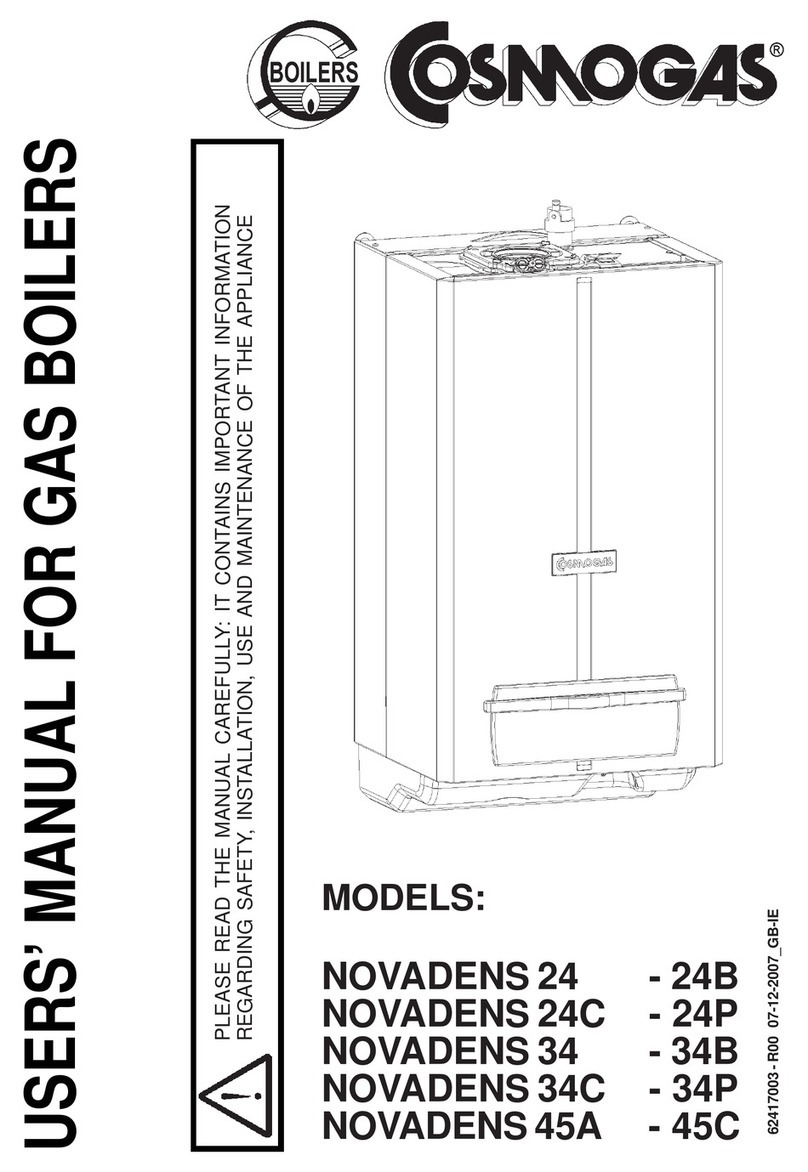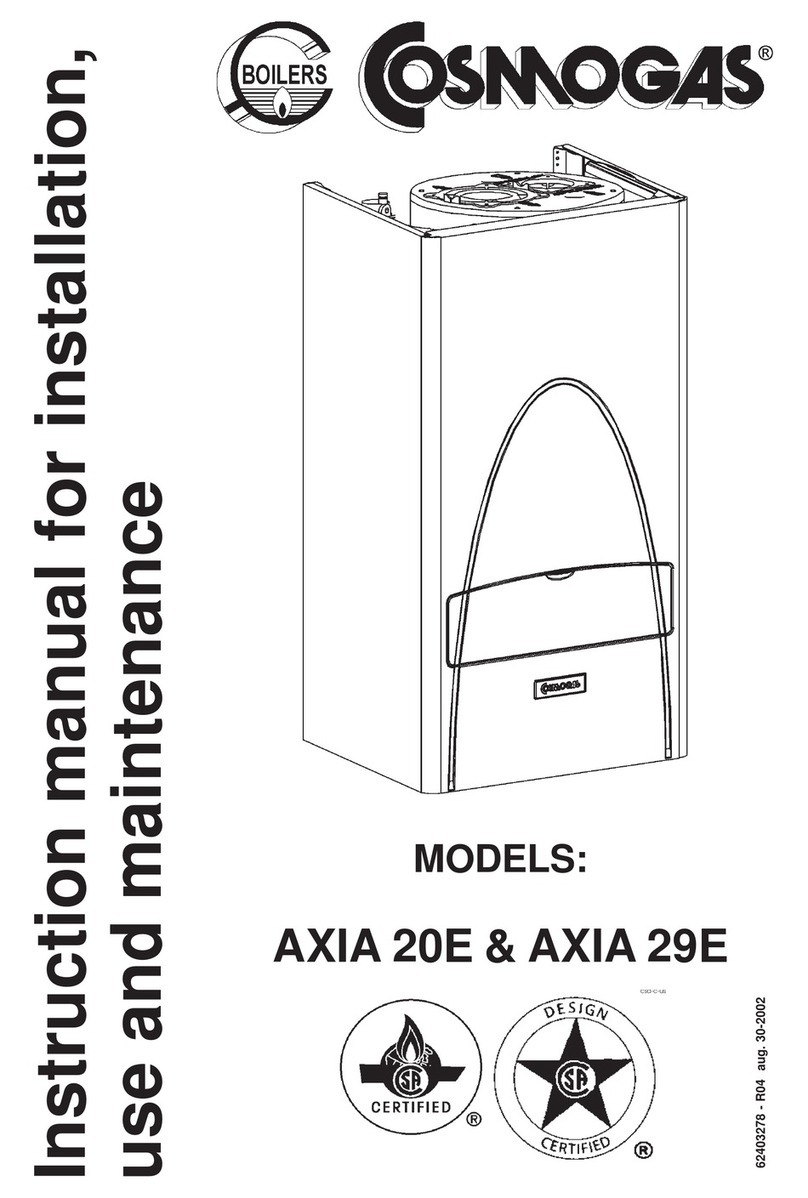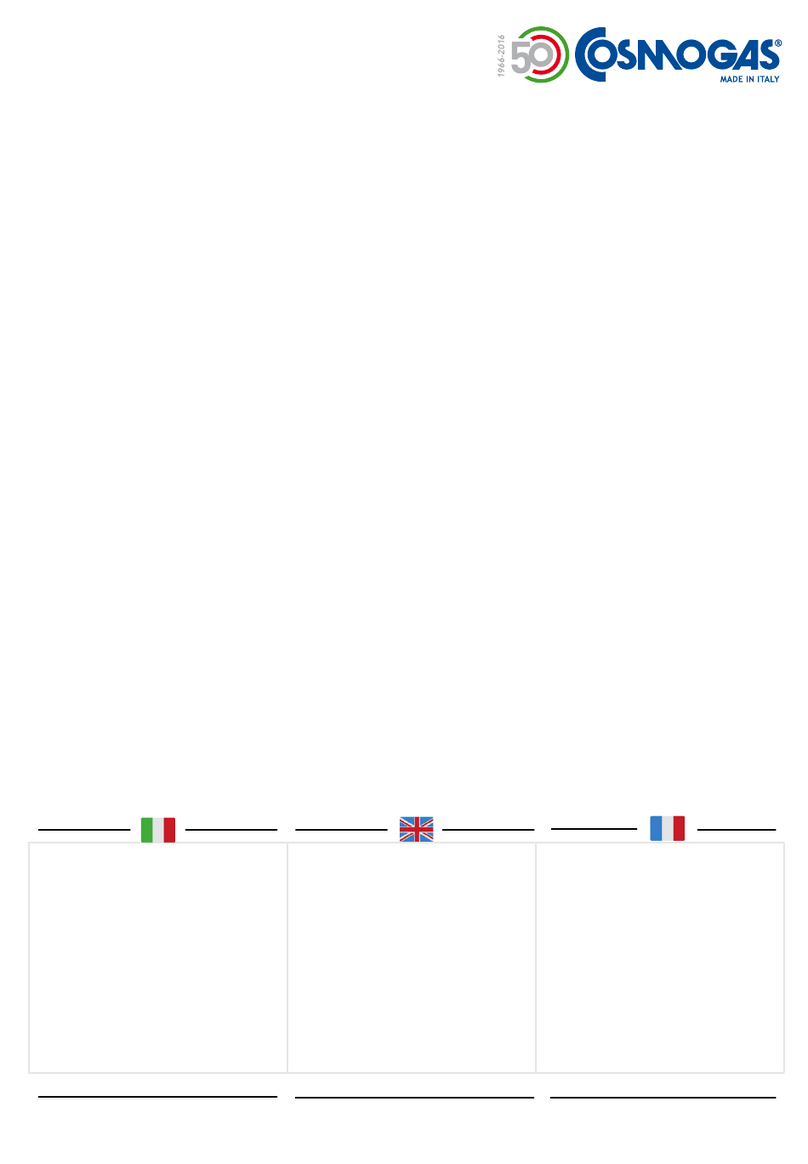
5MYDENS 60
COSMOGAS
If you smell gas
1. - Close the gas cock.
2. - Ventilate the room.
3. - Do not switch on any electric device, including a telephone.
4. - From another room, immediately call a professionally
qualied technician or the gas supply company. Call the
Fire Service if the former are not available.
If you can smell combustion products
1. - Switch the appliance off.
2. - Ventilate the room.
3. - Call a professionally qualied technician.
Explosive or highly ammable products
Do not store or use explosive materials or highly ammable
materials such as paper, solvents, paints, etc. in the room
where the appliance is installed.
Installation, modications
The gas appliance must be installed, calibrated and
modied by professionally qualied staff, in compliance with
national and local regulations, as well as the instructions
in this manual.
Incorrect installation or poor maintenance can cause
damage or injury to persons, animals or objects, for which
the manufacturer cannot be deemed liable.
The appliance outlet must be connected to a exhaust gases
evacuation pipe. Failure to comply with this regulation leads
to serious risks for the safety of persons and animals.
A domestic hot water temperature exceeding 51°C can
cause permanent damage or injury to persons, animals
and objects. In particular, protect children, the elderly and
people with disabilities against any possible risks of scalds,
by inserting devices that limit the usage temperature of the
DHW to users.
The parts conducting the ue gas must not be modied.
Do not obstruct the ends of the intake/outlet pipes.
Do not leave parts of the packaging and any replaced parts
within the reach of children.
Seal the adjustment devices after every calibration.
In agreement with the provisions for use, the user must
keep the installation in good working order and guarantee
reliable and safe operation of the appliance.
The user must have maintenance performed on the appliance
by a professionally qualied technician in compliance with
national and local regulations and this manual.
We would also highlight the benet of an annual scheduled
maintenance contract with a professionally qualified
technician.
Before performing any cleaning or maintenance operations,
disconnect the boiler from the mains power supply and
gas, activating the relevant isolation devices up-stream
from the boiler.
After having performed any cleaning or maintenance
operations, make sure that all internal parts of the appliance
are dry before re-connecting the electric power supply.
This appliance is not intended for use by persons (including
children) with reduced physical, sensory and mental
capabilities or a lack of experience or knowledge, unless
they are supervised or have been instructed on use of the
appliance by a person responsible for their safety.
This manual is an integral and essential part of the product
and must be retained carefully by the user for future
consultation. If the appliance needs to be transferred or
if you should move and leave the unit to another user,
always ensure that this manual remains with the new user
and/or installer.
Any options or kits added later must be original Cosmogas
products.
This appliance must be used only for the expressly declared
purpose: heating water for closed circuits intended for
centrally heating rooms for civil and domestic use, and
producing domestic hot water for civil use.
Any contractual and non-contractual liability on the part
of the manufacturer is excluded for damage caused by
installation errors or usage errors and, in all cases, following
a failure to comply with the instructions given by the
manufacturer or with applicable national and/or local laws.
For safety reasons and to safeguard the environment, the
packaging components must be disposed of in the relevant
separate waste collection centres.
In case of breakdown
In the event of a fault and/or poor operation of the appliance,
disconnect it and do not attempt to carry out any repairs.
Contact a professionally qualified technician only. If
components need to be replaced, these must be original spare
parts. Failure to comply with the above may jeopardise the
safety of the appliance.
Professionally qualied technicians.
A ‘professionally qualied technician’ means a person with
specic technical skills in the sector of central heating system
components and the production of domestic hot water for
sanitary and civil uses, electric installations, and systems for
the use of combustible gas. Such people must have the skills
envisaged by the law.
Technical drawings
All the drawings shown in this manual relating to electrical,
hydraulic or gas installation systems must be understood to
be purely illustrative. All the safety devices, auxiliary devices
as well as the diameters of the electrical, hydraulic and gas
pipes, must always be checked by a professionally qualied
technician, to make sure they satisfy the applicable laws and
regulations.
1.1 - National installation
laws and regulations
- Rules regarding the prevention of res issued by the re
service
- Ministerial Decree of 01/12/75
- Law of 09/01/91 n°10 as amended
- Presidential Decree n° 412 dated 26/08/93
- Ministerial Decree of 12/04/96
- Presidential Decree n° 551 dated 21/12/99
- Legislative Decree n°192 of 19/08/05
- Legislative Decree n°311 of 29/12/06
- Ministerial Decree of 22/01/2008 n°37
- Law of 03/08/13 n°90
- Legislative Decree n°102 of 04/07/14
- Ministerial Decree of 26/06/15
- CEI standard 64-8
- INAIL compilation R
1 - GENERAL SAFETY WARNINGS
